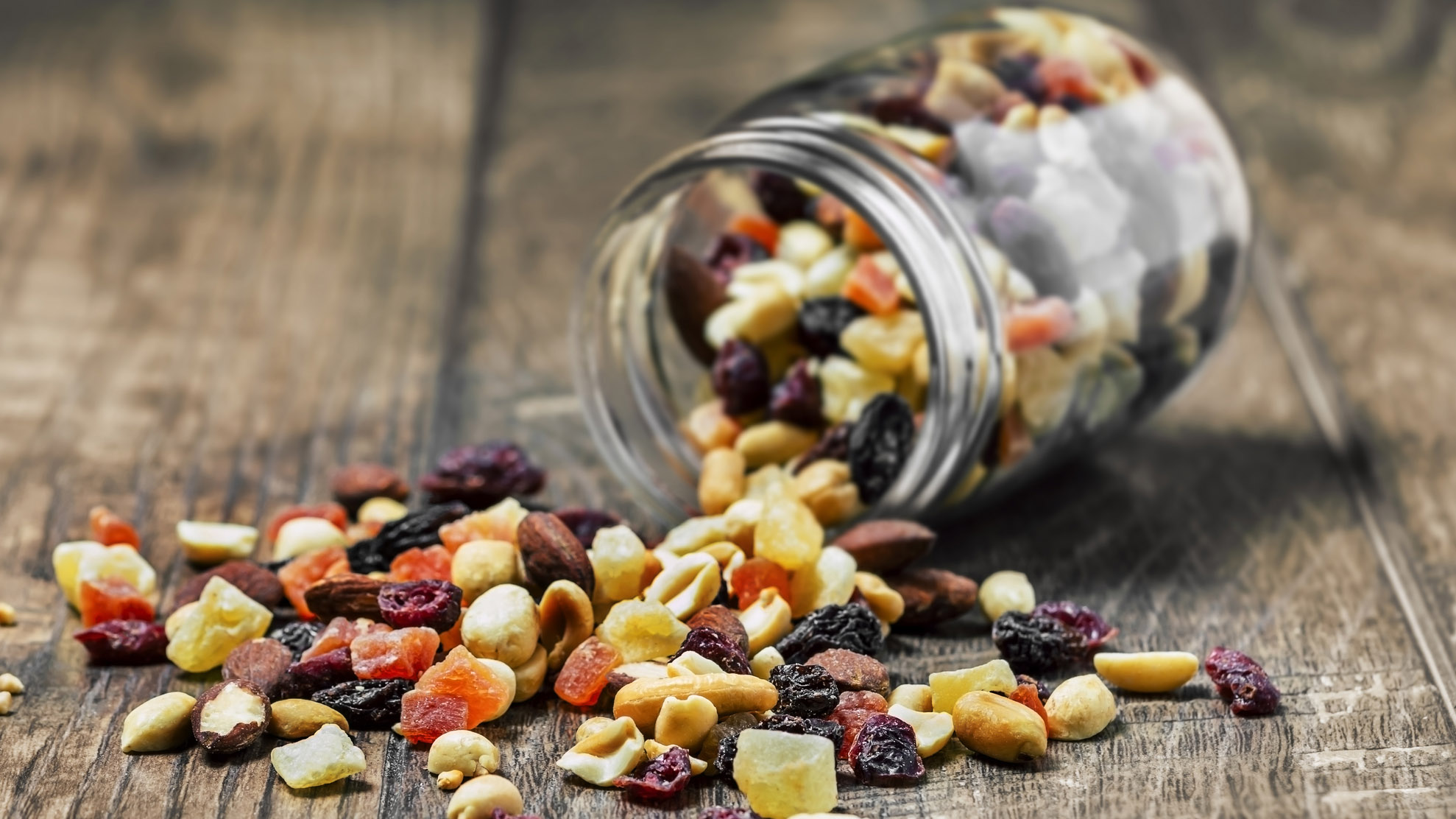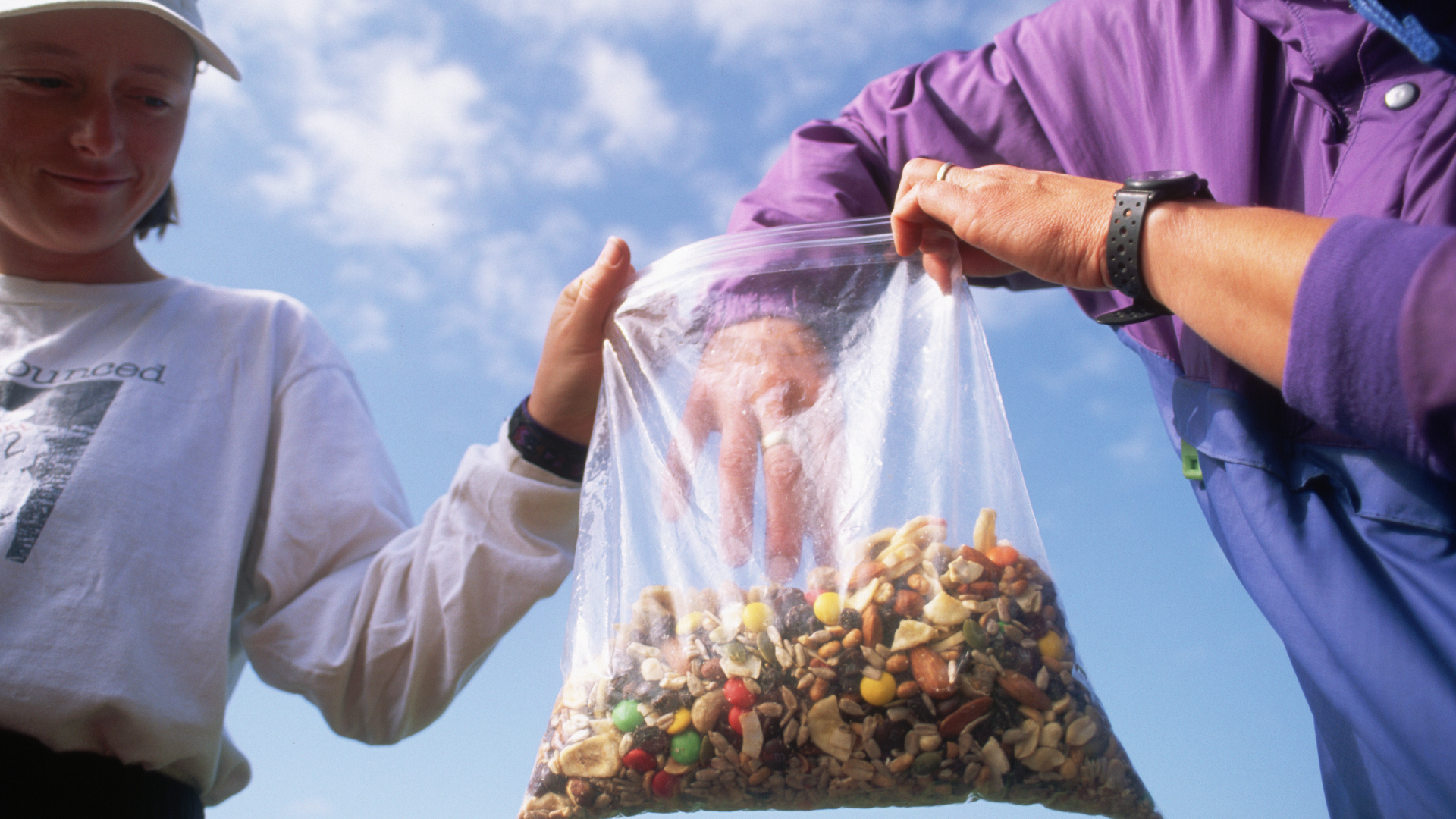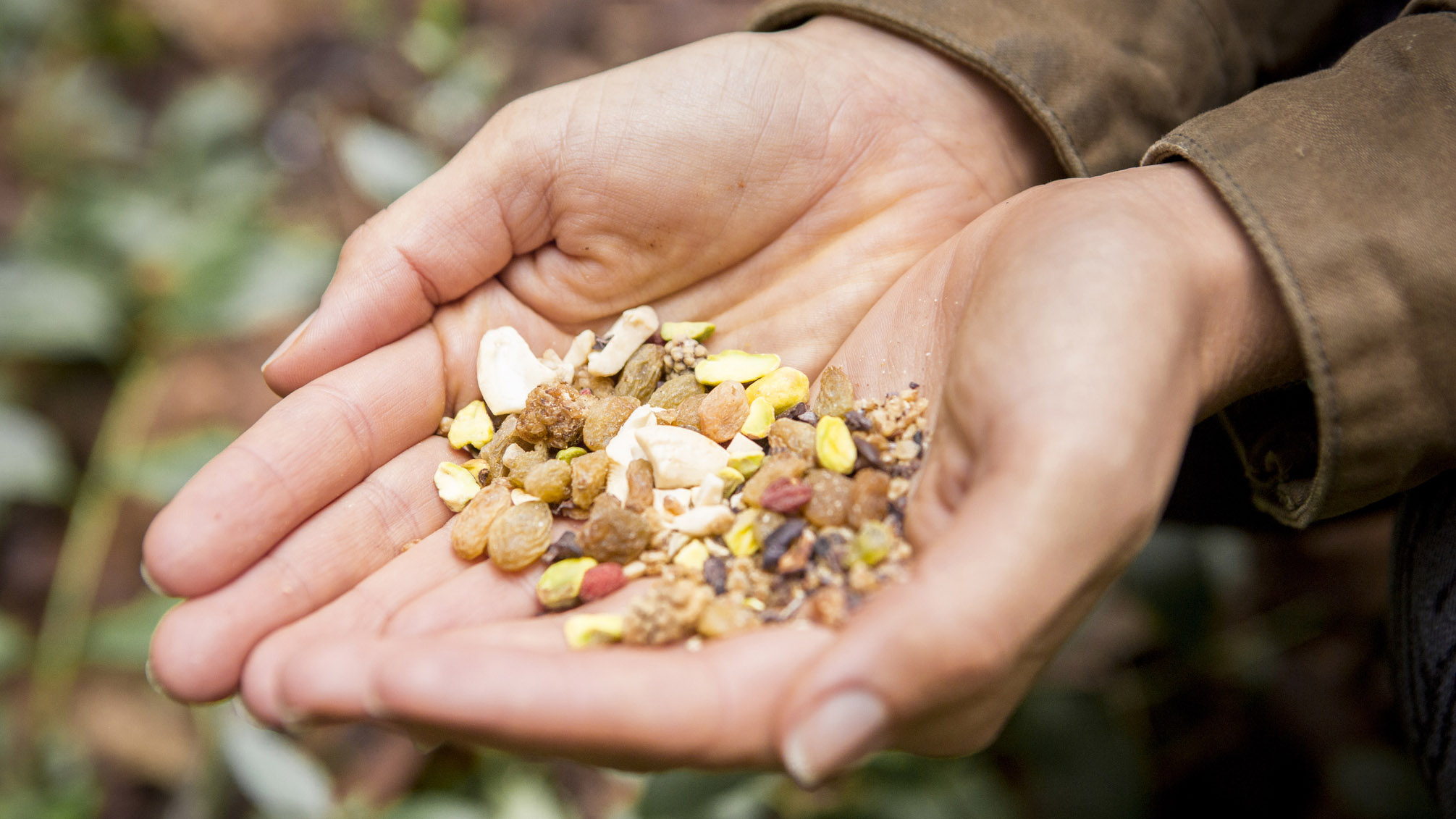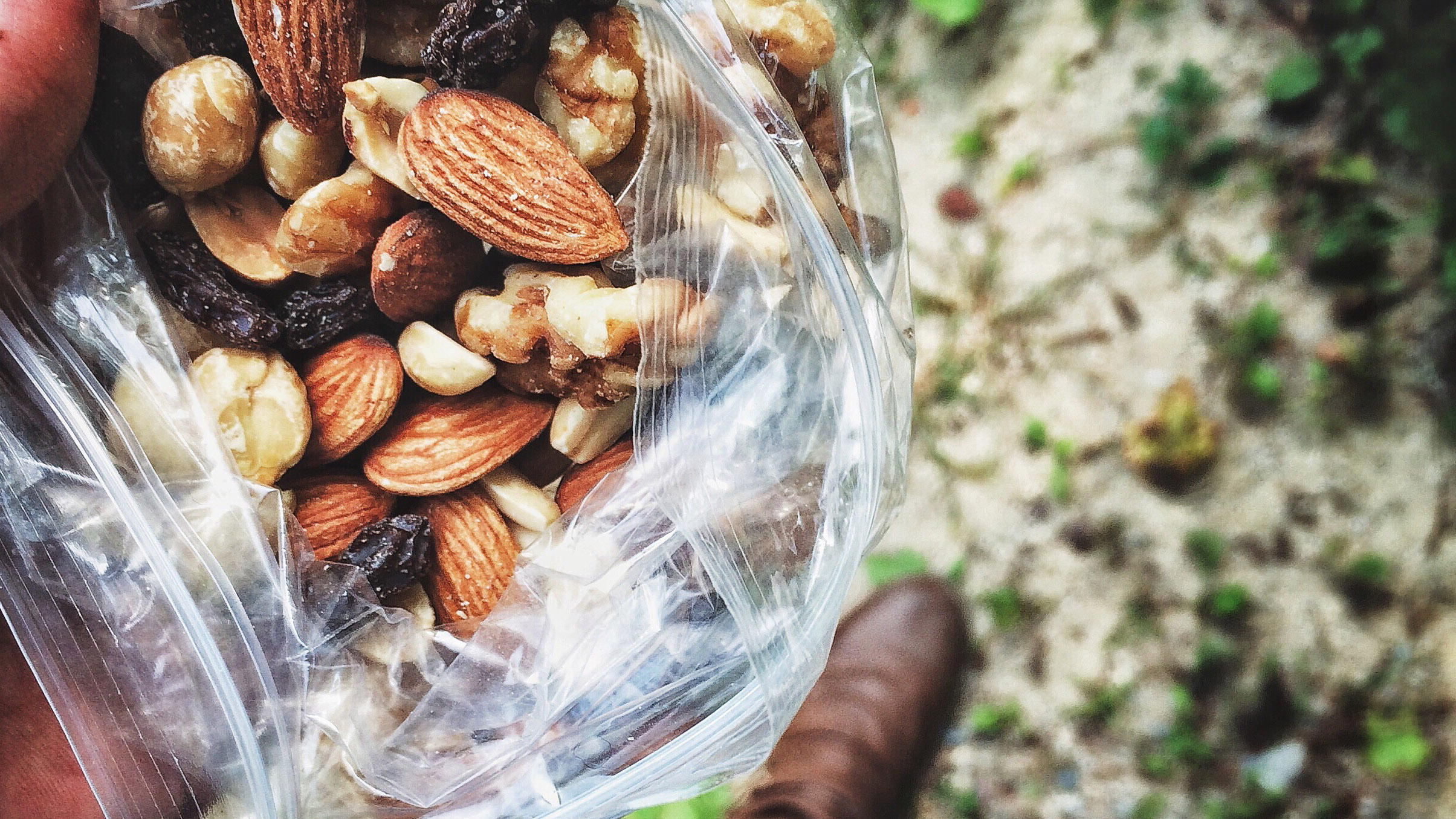How to make trail mix for your next adventure
Making your own trail mix is cheap, easy, healthy, and allows you to tailor your recipe to suit your tastes

It’s not only a stereotype that we hikers love our trail mix, is it? This tasty, versatile snack is ideal for hiking and backpacking in about a hundred different ways. Nuts are packed with protein and calories to keep you fueled on long hikes. It’s pretty lightweight, so long as you don’t cart around a Costco-sized bag of the stuff. It’s easy to cram into small spaces in your backpack, like side pockets or inside your camping mug. It’s non-perishable so if you don’t eat it all on this hike, you can put it away in the pantry until next time. It doesn't require a knife and fork to eat. The crunch can provide a nice respite from all that mushy backpacking food – and speaking of mushy backpacking food, do you ever throw a handful of trail mix into your oatmeal in the morning to give it some oomph before you hit the trail? No? You should.

So as I said, trail mix is one of the perfect hiking snacks, which is why it’s named for the place we most love to place our hiking boots, but if, like me, you eat a lot of it, the price can really add up. Further, when you buy trail mix from the store, it sometimes has hidden ingredients like soy lecithin, palm oil or added sugars that you might not want to be eating, and you don’t actually need in a good mix. And unless you find the perfect trail mix, you might end up spending half your hike picking out the dried peas or whatever ingredients you don’t want. That’s why I started making my own trail mix years ago and have never looked back.
Making your own trail mix is cheaper if you buy the ingredients in bulk, often healthier, and allows you to tailor your mix to suit your tastes. Plus, it’s super simple. Read on for all the basics of whipping up your own trail mix for your next adventure, and I share my favorite recipe to help you get started.

What is usually in trail mix?
The beauty of trail mix is that it’s really versatile, meaning you can make yours fruity or nutty or chocolatey or even go totally off-piste and add saltier legumes or pretzels. In essence, though, trail mix should be crunchy and chewy, and contains a combination of nuts and seeds and dried fruits.
My favorite trail mix recipe
I wouldn’t say there’s an exact science to making trail mix, but my general approach for the perfect balance of crunch and chew is to have equal proportions or slightly more dried fruits to nuts and seeds. So if you’re preparing your trail mix and you have two cups of crunchy ingredients such as nuts, seeds, legumes and pretzels, try to have at least two cups, and perhaps a little more, of the chewy, gooey goods like dried fruits and chocolate chips.
Below is my go-to trail mix recipe, which makes about 4.5 cups at a time. I usually make a batch every few weeks, store it in a large glass jar, then shovel out a handful or two into a sealable plastic bag when I’m going for a hike.
- 1 cup of sunflower seeds
- ½ cup almonds (chopped coarsely)
- ½ cup cashew nuts
- 1 ½ cups raisins
- ⅓ cup dried apricots (chopped coarsely)
- ⅓ cup dried apples (chopped coarsely)
- ⅓ cup dried bananas (chopped coarsely)
- ¼ teaspoon of ground cinnamon
- ⅛ teaspoon ground cardamom
Method: Mix all ingredients in a large bowl with a spoon, and store in a cool dry place.
Advnture Newsletter
All the latest inspiration, tips and guides to help you plan your next Advnture!

As you can see, I like my trail mix on the healthier side, focusing on fruits and nuts, but you can easily use this recipe as a rough guide and make any of the following suggested adjustments:
- Add chocolate chips or coconut flakes
- Switch out the nuts for those you prefer, like peanuts and macadamias
- Mix up the fruits to make it more tropical, such as swapping the dried apples for mangoes
- Replace half or all of the raisins with cranberries
Basically, the world’s your oyster!
- Best hiking boots: tested and rated on tough terrain
Julia Clarke is a staff writer for Advnture.com and the author of the book Restorative Yoga for Beginners. She loves to explore mountains on foot, bike, skis and belay and then recover on the the yoga mat. Julia graduated with a degree in journalism in 2004 and spent eight years working as a radio presenter in Kansas City, Vermont, Boston and New York City before discovering the joys of the Rocky Mountains. She then detoured west to Colorado and enjoyed 11 years teaching yoga in Vail before returning to her hometown of Glasgow, Scotland in 2020 to focus on family and writing.

